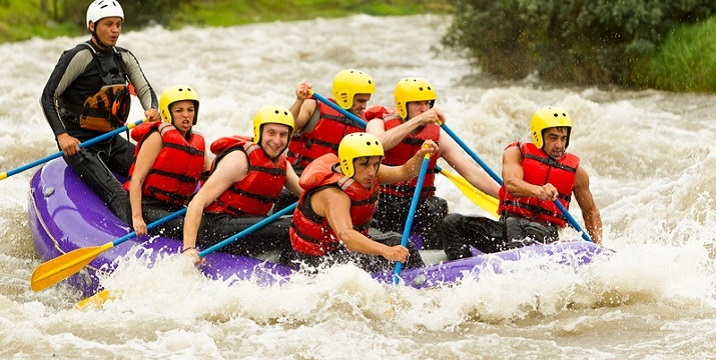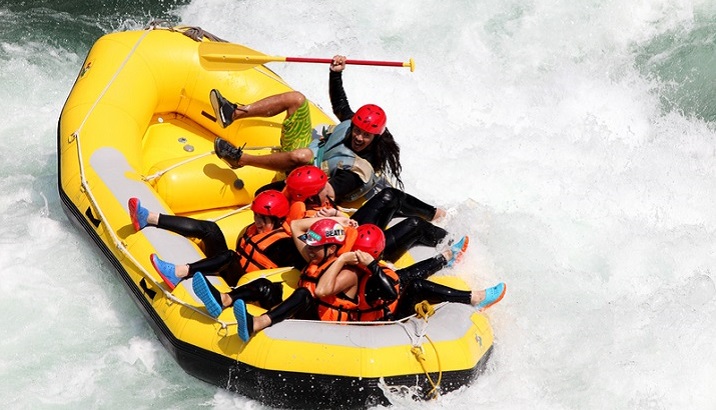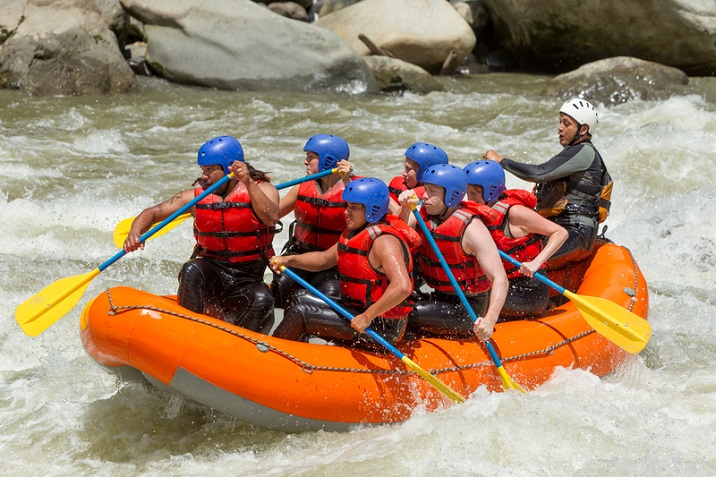
Rafting - How To Play?
Starting the Race
In order to start rafting, first the rafter have to place one hand on the paddle into the water and another hand about one third of the way up from the head of the paddle. This is the best position to start rafting.
The paddle head should be placed into the water so that the head will be perpendicular to the body of the rafter. After that the paddle must be drawn away from the boat. If your paddle is placed in the right position, then that should create the least amount of resistance.

Rotating the Paddle
It is always beneficial to know that once your arms are fully extended then rotate the head of the paddle to 90 degrees so that the head of the paddle will be parallel to your body. That will help you to rotate in your direction. Pull the paddle in the water back towards your body. This should create a lot of resistance, pulling your boat in the direction of the paddle.
Rafting Techniques
Rafts in white water rafting are very different vehicles than other water vehicles like canoe and kayak, and have their own specific techniques to manoeuvre through white water obstacles. Examples of these techniques include the below.
Punching − On rivers, hydraulics raft dodged by canoes and kayaks are sometimes punched/strike by rafts. This means the rafting crew paddle the raft to give it maximum speed to push through the water without getting stopped.
High siding − If a raft is caught in the water, sometimes it will go quickly sideways. In order to stop the raft flipping on its inside edge, the rafters climb to the side of the raft furthest downstream, which will also be the side of the raft highest in the air leading to it.
Low siding − Sometimes a professional manoeuvre used at low water to slide through a channel less than the size of the craft.
Capsizing
Dump truck − If a raft dumps any of its passengers or all of its passengers but remains upright, then it is said as dump-trucked.
Left over right or right over left − Rafts may capsize due to large waves or hitting a rock which results in flipping. The riders can avoid flipping by good paddling under skilful guidance.
Taco − Taco occurs if a raft is soft or is not fully inflated. In this case, the middle part of the raft buckles and the front part nearly touches the back part. Reverse taco also occurs due to the pulling down of nose or stern of the raft in water. This results in touching of noose, middle or back of the raft by the buckles.
End over end − End over end occurs very rarely. This occurs when the load of the raft is lightened through dump-trucking. Due to this, the rafts flips as dumptrucking allows water to overcome the weight of the raft.
Downstream flip − A raft may capsize due to collision with a rock, another raft or any other stationary object. It results in instability of the raft flipping it towards downstream. This flip worsens due to the load of the riders and they can overcome it by pulling the boat.
Back roller − A broad reversal is often formed below a dam. Rafts can be unsafe to back rollers, because they can quickly fill a raft and then push it down at the back.
Dark-siding − When the raft starts to flip, then the rafter climbs over a side. Anyone who witnesses one of these owes beer to the successful dark-sider.

Re-righting
Flip line − In commercial rafting, flip line technique us used frequently. Under the guidance of the instructor, the rafters can avoid flips as the instructor carries a webbing having a carabiner. The instructor attaches it to the raft on its perimeter line. The raft is re-righted when the riders hold the perimeter line of the upside down raft. Then they lean to that side where flip is attached.
Knee flipping − A small capsized raft can be knee-flipped. In this case, a rafter has to hold the webbing at the underside of the raft and push their knees into the outer tube. While leaning back, they lift their body out of water from an overturned raft.
T rescue − Some rafts are large enough that they need to be turned with the help of another raft. The raft lands at the side of the raft. This is known as T rescue.
T-grip re-flip − The T-grip on a rafting paddle may be used to re-flip light rafts by inserting the Tee into the self-bailing holes around the entire perimeter and re-righting the boat in the same manner as the flip line technique.
